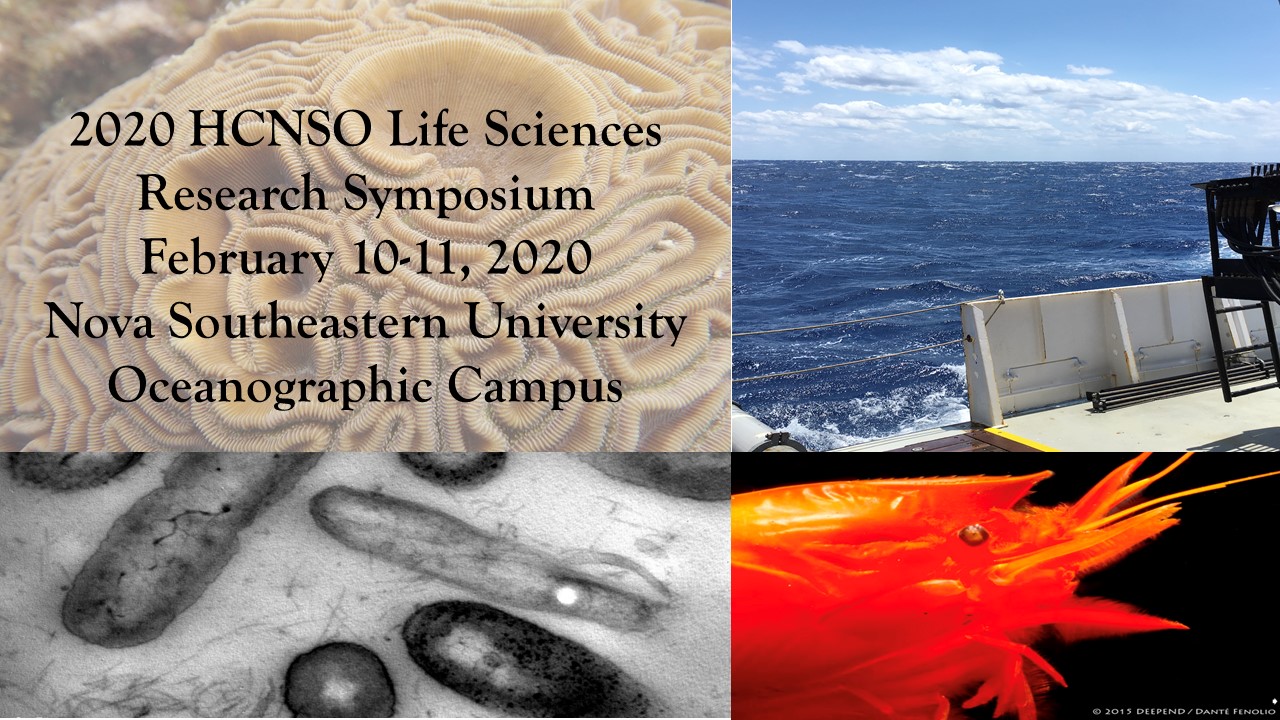Genetic population dynamics of endangered scalloped hammerhead sharks in the Eastern Tropical Pacific
Location
HCNSO Guy Harvey Oceanographic Center Nova Southeastern University
Start
2-11-2020 2:15 PM
End
2-11-2020 2:30 PM
Type of Presentation
Oral Presentation
Abstract
The globally distributed, coastal-pelagic scalloped hammerhead shark (Sphyrna lewini) is widely exploited for its fins and meat. Drastic population declines have resulted in its categorization as Endangered on the IUCN Red-List and inclusion under the US Endangered Species Act. This species is famously recognized for its tendency to form seasonal aggregations of mostly adult females around seamounts and offshore islands in the Eastern Tropical Pacific (ETP), including the northern Galápagos Islands. Female scalloped hammerheads in the ETP are also known to utilize shallow mangrove bays along the Central and South American mainland for parturition. My study objectives are to determine: 1) if parent-offspring relationships exist between the adult sharks in the Galápagos and young-of-year (YOY) sharks sampled in coastal nursery areas of Panama, Ecuador, Costa Rica, Colombia and the Galápagos Islands, 2) genetic relatedness of YOY animals sampled in individual coastal nursery areas, and 3) population structure of YOY sharks to test for hypothesized female philopatry to coastal parturition areas. Results to date using five biparentally inherited nuclear microsatellite and maternally-inherited mitochondrial DNA sequence markers show little genetic population structure among mainland sampled sites in the ETP; however, significant pairwise genetic differences were found in the mitochondrial DNA between the Galápagos YOY and all mainland YOY samples. No parent-offspring relationships were found between the adult Galápagos aggregation (n=130 females) and YOY individuals (n=320) in the ETP. Analysis of the five biparentally-inherited markers found 33 full-sibling pairs and 1208 half-sibling pairs among the 5 nurseries sampled. The high percentage of half-siblings suggests a polyandrous mating system in scalloped hammerheads in the ETP, consistent with similar findings for this species in the Indian Ocean. Analysis with additional microsatellite markers is ongoing to examine the comparative genetic diversity of the iconic Galápagos aggregation animals to scalloped hammerheads from other regions.
Genetic population dynamics of endangered scalloped hammerhead sharks in the Eastern Tropical Pacific
HCNSO Guy Harvey Oceanographic Center Nova Southeastern University
The globally distributed, coastal-pelagic scalloped hammerhead shark (Sphyrna lewini) is widely exploited for its fins and meat. Drastic population declines have resulted in its categorization as Endangered on the IUCN Red-List and inclusion under the US Endangered Species Act. This species is famously recognized for its tendency to form seasonal aggregations of mostly adult females around seamounts and offshore islands in the Eastern Tropical Pacific (ETP), including the northern Galápagos Islands. Female scalloped hammerheads in the ETP are also known to utilize shallow mangrove bays along the Central and South American mainland for parturition. My study objectives are to determine: 1) if parent-offspring relationships exist between the adult sharks in the Galápagos and young-of-year (YOY) sharks sampled in coastal nursery areas of Panama, Ecuador, Costa Rica, Colombia and the Galápagos Islands, 2) genetic relatedness of YOY animals sampled in individual coastal nursery areas, and 3) population structure of YOY sharks to test for hypothesized female philopatry to coastal parturition areas. Results to date using five biparentally inherited nuclear microsatellite and maternally-inherited mitochondrial DNA sequence markers show little genetic population structure among mainland sampled sites in the ETP; however, significant pairwise genetic differences were found in the mitochondrial DNA between the Galápagos YOY and all mainland YOY samples. No parent-offspring relationships were found between the adult Galápagos aggregation (n=130 females) and YOY individuals (n=320) in the ETP. Analysis of the five biparentally-inherited markers found 33 full-sibling pairs and 1208 half-sibling pairs among the 5 nurseries sampled. The high percentage of half-siblings suggests a polyandrous mating system in scalloped hammerheads in the ETP, consistent with similar findings for this species in the Indian Ocean. Analysis with additional microsatellite markers is ongoing to examine the comparative genetic diversity of the iconic Galápagos aggregation animals to scalloped hammerheads from other regions.


